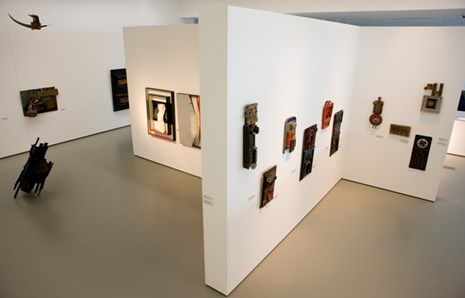Assemblage, The Lithuanian Way

Assemblage, The Lithuanian Way
The history of assemblage in Lithuania (the term was coined by Jean Dubuffet in 1953) is short. When the Museum of Modern Art in New York held an overview exhibition of 20th-century assemblages in 1961, the only artist in Lithuania who had produced several works using the technique by that time was Vincas Kisarauskas (1934-1988). More works and more artists emerged in the 1960s and 1970s. Valentinas Antanavičius (b. 1936), Algimantas Jonas Kuras (b. 1940), Marija Teresė Rožanskaitė (1933-2007), Raimondas Martinėnas (b. 1947) and Česlovas Lukenskas (b. 1959) began exploring the technique alongside painting. The use of mounted objects and refuse, the merging/opposition of different materials and shapes, their combination with painted surfaces, or the arrangement of three-dimensional (spatial) compositions detached from the surface in assemblages came in a variety of stylistic and technical forms, which intertwined with collage, object-based art, installations, and painting.
Its reception in Lithuania was influenced by various sources, including information about foreign artists and their work that reached the country. These sources included the painting, theatre and art press in neighbouring Poland, as well as rare visits by Lithuanian artists to Poland.
Infused with elements of irony, the grotesque, playfulness, sarcasm and mischief, and being a product of urban junk culture, assemblage was strongly opposed to the ideological doctrines of Socialist Realism in Soviet times. Assemblage works were not accepted for official exhibitions and museum collections. The artistic results were the product of quiet work in artists' studios, rare unofficial exhibitions, and a gradually growing circle of supporters.
A large exhibition of Lithuanian assemblages has still to be mounted. This one presents a small selection of works by the six best-known and devoted assemblage artists, which show indirect links with the work of the influential figure in the Polish avant-garde, Tadeusz Kantor.
Curator: Viktoras Liutkus


